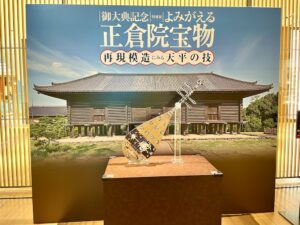
Shosoin is very familiar with most Japanese people because we learned about it in Japanese history class at our elementary schools.
Shosoin is a huge storehouse in Nara to keep national treasures and we have Shosoin is a storehouse in Nara to keep national treasures, and we have seen some of them as pictures in the books. However, it is rare to see the actual treasures because they are too old, around 1300years, and heavily fragile to keep their original forms.
In this exhibition, we can see the reproduced treasures by combining expert skills and traditional techniques with the latest findings of scientific research and history studies.
The Shosoin Treasures are approximately 9,000 items. Many of the items, including those associated with Emperor Shomu (701-756), were made in the Nara period(710-784) and cover a wide variety of fields, including furnishings, musical instruments, playthings, weapons and armoury, stationery, Buddhist artifacts, documents and dyed and woven textiles.
Some of the items came from the Western regions, where is nowadays West and Central Asia, and the Tang Dynasty in China. They show how the East and West exchanges had conducted during the Tenpyo(729-749) era.
The reproduction of Shosoin treasures plans started from the Meiji era (1868-1912). And since 1949, the Shosoin Office of the Imperial Household Agency, which manages the treasures, has been carrying out replica production with an emphasis on faithful reproduction of the materials, techniques, and structure of them.
Here we can see a selection of the finest examples from the hundreds of reproductions in this exhibition.
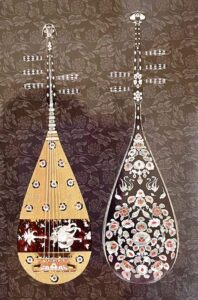
First of all, a Five-stringed biwa (Chinese lute) with mother-of-pearl inlay and ebony replica came into our eyes. So beautiful and luxurious instrumental decorated with precious materials is faithfully reproduced, and it is a playable one. At the venue, the recorded sound of the replica is floating.
Today, some materials like tortoiseshell are prohibited from being captured under the Washington convention, so the expert found the few remaining in Japan to realize the replica.

And there are other instrumental replicas like a bamboo flute or decorated small drum and a unique mask for dancing imported from China or more west regions.
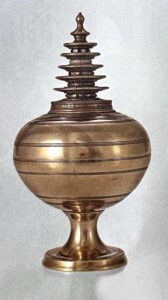
In the following section, it is for the beautiful Buddhism ceremonial goods like an incense burner, gift boxes, or desks. They are decorated with gold and silver paints or glass marbles.
Silk fabrics are so impressive in the textile section. The designs are elaborate, the colours of the threads used are complex and the sheen is wonderful. And advanced weaving techniques are amazing!
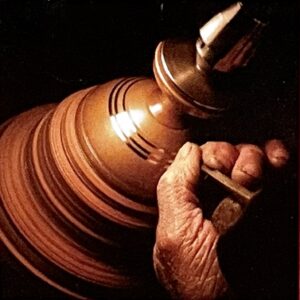
Moreover, there are many beautiful decorated boxes, mirrors, swords, and ancient hand scripting.
The hand scripting is quite interesting because they are the officials’ leave forms 1300years ago. The reason of leave from the work is for attending sick mother or for religious events, etc. It is interesting that the documents give a glimpse into the lifestyle of the time, which is somewhat unchanged from today. The reproduction of hand scripting is remarkable because of its high techniques and result.
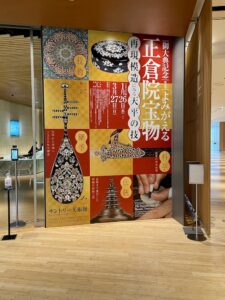
Learning about the glamorous history of antiquity is so fun, but I realised that Learning about the glamorous history of antiquity is so fun, but I realized that this was only possible because of the latest technology and patient research.
I respect all those involved in recreating these treasures.